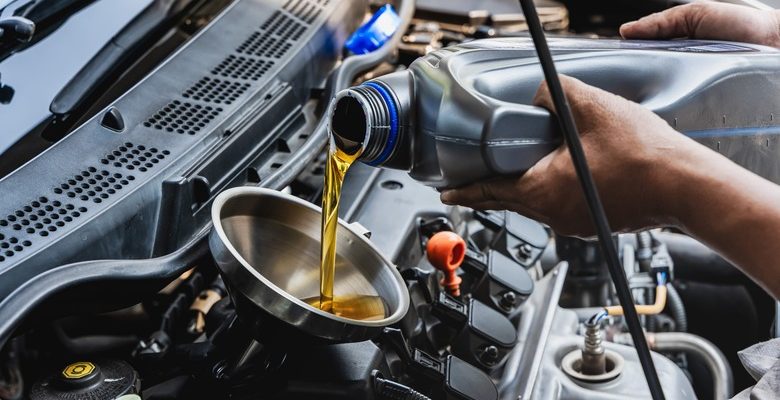Adding oil to a hot engine is generally not recommended immediately after it’s been running. Here’s why, and what to do instead:
Why It’s Risky
- Risk of Burns: Hot engine components (exhaust manifold, engine block) can cause severe burns if oil splashes onto them.
- Oil Flash Point: Adding cold oil to extremely hot surfaces can potentially cause it to flash, creating a fire hazard. While rare, it’s a risk.
- Thermal Shock: Abrupt temperature changes can stress engine components, potentially leading to cracking (though this is less likely with modern engines).
- Inaccurate Reading: A hot engine can give a temporarily inaccurate oil level reading.
Mechanic-Approved Advice
- Wait a While: Let the engine cool down for at least 15-30 minutes before checking and adding oil. This reduces the risk of burns and thermal shock.
- Check the Dipstick: After the cooldown period, use the dipstick to get an accurate oil level reading. Wipe it clean, reinsert it fully, and then check the level.
- Add Oil Gradually: Pour oil in small increments, rechecking the dipstick after each addition. Avoid overfilling.
- Use the Correct Oil: Always use the oil type and viscosity recommended in your vehicle’s owner’s manual.
- Be Careful: Wear gloves and eye protection to avoid skin contact with hot oil.
Emergency Situations
If you must add oil immediately (e.g., critically low oil level warning light), do so very carefully. Pour slowly and deliberately, avoiding spillage. Prioritize engine preservation over minor risks in this situation.
Prevention is Key
Regular oil checks and maintenance are the best way to avoid being in a situation where you need to add oil to a dangerously hot engine. Follow your vehicle’s recommended service schedule.
What if You Overfill?
Overfilling the engine oil is almost as bad as running it low. Excess oil can cause:
- Foaming: The crankshaft can churn the oil, creating air bubbles that reduce lubrication effectiveness.
- Oil Leaks: Increased pressure can force oil past seals and gaskets.
- Catalytic Converter Damage: Excess oil can be forced into the combustion chamber and burned, contaminating the catalytic converter.
- Reduced Fuel Economy: The engine has to work harder to overcome the resistance of the excess oil.
If you accidentally overfill, don’t drive the car! The best course of action is to have a mechanic drain the excess oil. If that’s not immediately possible, you can try to siphon some out using a pump or syringe with a small hose, inserting it into the dipstick tube. However, this is a messy process and best left to professionals.
Oil Level Warning Lights: What They Mean
Your vehicle has warning lights to alert you to potential oil problems. Understanding these lights is crucial:
- Oil Pressure Light (Looks like an oil can): This indicates low oil pressure. This is a serious issue that requires immediate attention. Pull over safely and shut off the engine. Continuing to drive with low oil pressure can cause catastrophic engine damage.
- Oil Level Light (May say “Oil Level Low” or a similar message): This means the oil level is low and needs to be topped off. You can usually drive a short distance to a safe location to add oil, but don’t delay.
Important: Don’t ignore these warning lights! They are there to protect your engine.
Beyond the Basics: Oil Types and Viscosity
Modern engines are sophisticated and require specific types of oil. Always consult your owner’s manual for the recommended oil type and viscosity. Using the wrong oil can lead to:
- Reduced Engine Performance: Incorrect viscosity can affect engine efficiency and power.
- Increased Wear and Tear: Improper lubrication can accelerate engine wear.
- Voided Warranty: Using non-approved oil may void your vehicle’s warranty.
Consider using synthetic oil, which often provides better protection and longer intervals between changes, especially for modern, high-performance engines. However, always adhere to the manufacturer’s recommendations.
Final Thoughts
While adding oil to a hot engine is possible in emergencies, it’s best avoided. Patience and caution are key to preventing burns and ensuring accurate oil level readings. Regular oil checks and adherence to your vehicle’s maintenance schedule are the best ways to keep your engine running smoothly and avoid potentially damaging situations.










I appreciate the emphasis on using the correct oil type. So important!
Excellent advice! I never thought about the thermal shock aspect. This is really helpful.
Simple, clear, and easy to understand. Exactly what I needed!
The overfilling section is a great addition. Many people overlook this.
The emergency situation guidance is crucial. Knowing what to do in a pinch is invaluable.
Great points about waiting for the engine to cool down. Safety first!